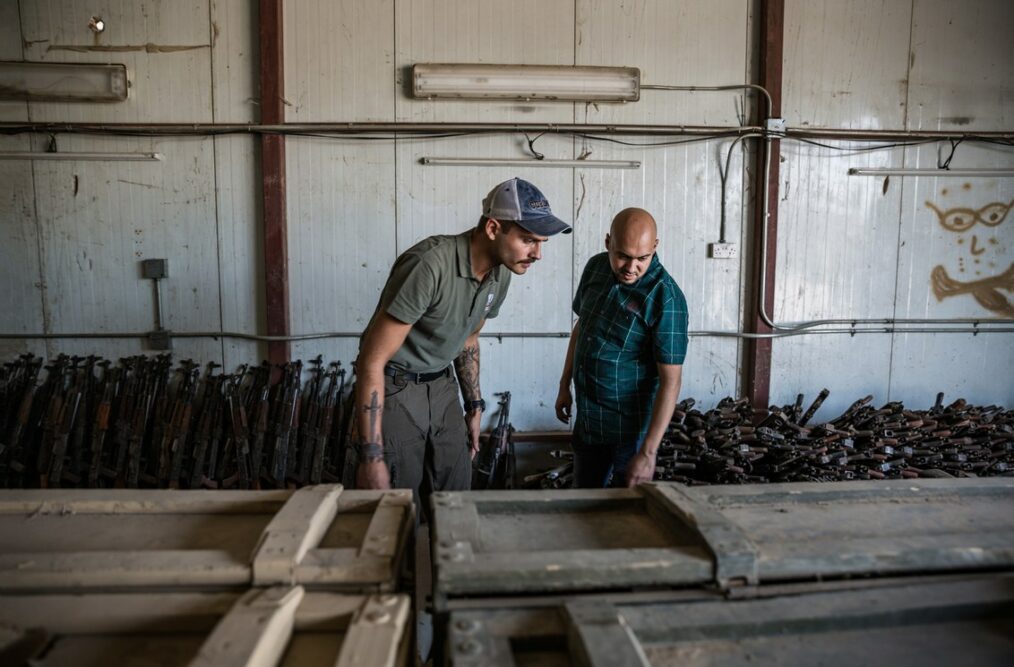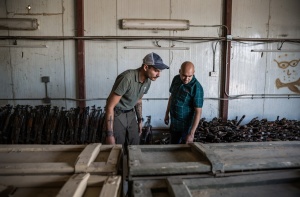
Weapons for Sale: How the U.S. Indirectly Supplies Terrorists and Organized Crime
While people many are aware that the United States supports partner forces across the Middle East, fewer realize the U.S. sells such partners billions of dollars in weapons.
Tracing such support is a challenge. For instance, old, Soviet-style weapons are supplied through Eastern Europe intermediaries. So despite what might be good intentions, the organization Conflict Armament Research suggests as much as 90% of ISIL’s weapons are traceable to US sources. How and why this occurs is the focus of a probe on American gun supply.

At Iraqi military intelligence headquarters in Baghdad, weapons inspector Damien Spleeters (left) and his coworker, Haider al-Hakim, look through crates of ISIS ammunition. ANDREA DICENZO
It is not just the U.S. but also Russia, Turkey and Saudi Arabia who employ such tactics.
Soviet-style weapons are easy to obtain and are familiar to, and highly sought-after by, Syrian fighters. Such weapons are not easily traceable, providing a separation between the U.S. and eventual recipients. One would that the government tightly regulates such arms sales. In fact, supply chains are complex, and procurement is complicated.
In the end, dealers move such weapons with insufficient oversight. Corruption and the use of private contractors further dilute regulatory stringency. And it is not just the U.S. Russia, Turkey, and Saudi Arabia employ such tactics. With dealings of this kind, it is inevitable that at least some weapons end up in hands other than those intended by the seller.
Nowhere has this been clearer than in Syria. There, as well as in spillover affecting its neighbors, the death toll continues to rise. Governments, private contractors, and INGOs must cooperate to ensure the legitimate and accurate movement of arms.
Shady deals and ever-shifting alliances must move the U.S. to reconsider its weapons export policies.
There is mounting evidence that the United States has even indirectly supplied weapons to groups like ISIL. Indirectly, the U.S. is enlarging the very conflicts it seeks to diminish. The U.S. was even recently cited as having supplied weapons used by gangs in Venezuela. Such evidence continues to mount. Yet, there has been little movement by the U.S. to increase the integrity and oversight of its arms sales.
Shady deals and ever-shifting alliances must move the U.S. to reconsider its arms export policies. If the U.S. wants to bring peace to this, or any region, it must improve arms sale transparency and oversight. Otherwise, guns will continue to end up in the hands of organized criminals, drug cartels, and terrorists.
